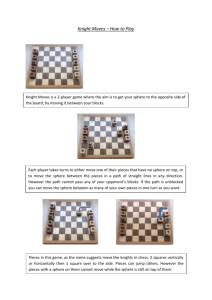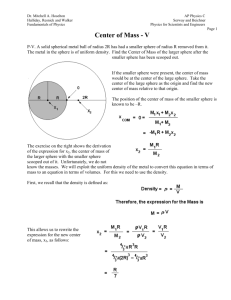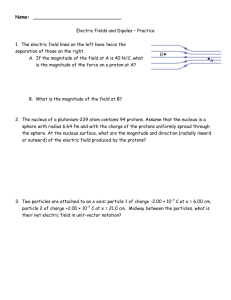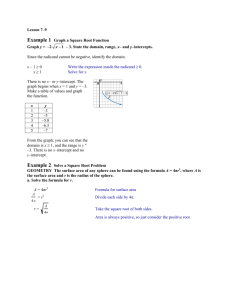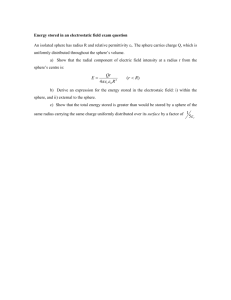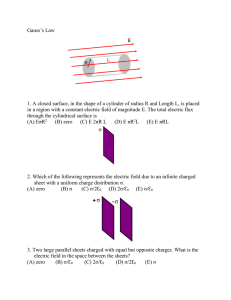Electric Potential Problems & Solutions
advertisement
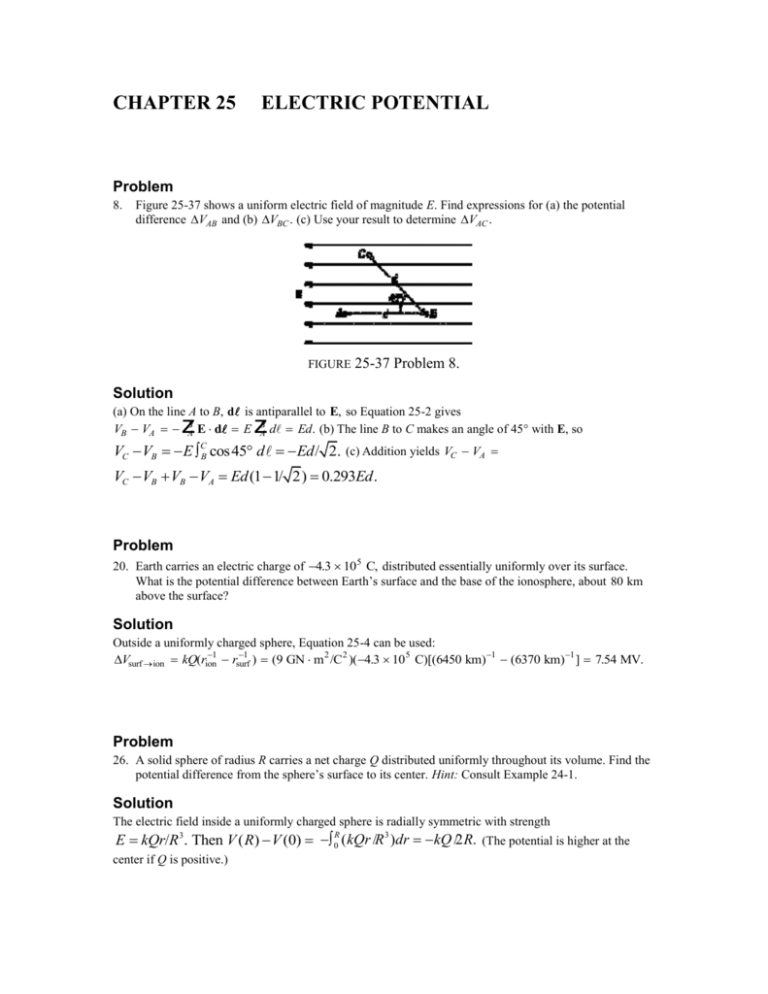
CHAPTER 25
ELECTRIC POTENTIAL
Problem
8.
Figure 25-37 shows a uniform electric field of magnitude E. Find expressions for (a) the potential
difference VAB and (b) VBC . (c) Use your result to determine VAC .
FIGURE
25-37 Problem 8.
Solution
(a) On the line A to B, d is antiparallel to E, so Equation 25-2 gives
VB VA BA E d E BA d Ed. (b) The line B to C makes an angle of 45 with E, so
z
z
VC VB E cos45 d Ed / 2. (c) Addition yields VC VA
C
B
VC VB VB VA Ed (1 1/ 2) 0.293Ed .
Problem
20. Earth carries an electric charge of 4.3 105 C, distributed essentially uniformly over its surface.
What is the potential difference between Earth’s surface and the base of the ionosphere, about 80 km
above the surface?
Solution
Outside a uniformly charged sphere, Equation 25-4 can be used:
1
1
Vsurf ion kQ(rion
rsurf
) (9 GN m 2 /C 2 )(4.3 10 5 C)[(6450 km) 1 (6370 km) 1 ] 7.54 MV.
Problem
26. A solid sphere of radius R carries a net charge Q distributed uniformly throughout its volume. Find the
potential difference from the sphere’s surface to its center. Hint: Consult Example 24-1.
Solution
The electric field inside a uniformly charged sphere is radially symmetric with strength
E kQr/R3. Then V ( R) V (0) 0R ( kQr /R 3 )dr kQ /2 R. (The potential is higher at the
center if Q is positive.)
Problem
32. Two identical charges q lie on the x-axis at a. (a) Find an expression for the potential at all points in
the x-y plane. (b) Show that your result reduces to the potential of a point charge for distances large
compared with a.
Solution
(a) Equation 25-6 and some geometry give
V (r ) kqi /ri kq[ r an
1
1
r an ] kq{[( x a ) 2 y 2 ]1/2 [( x a )2 y 2 ]1/2 }.
(b) If r 2 x 2 y 2 À a, a can be neglected relative to x or y, so V ( r ) 2kq/r , which is the potential
of a point charge of magnitude 2q.
Problem 43 Solution.
Problem
44. Figure 25-42 shows some equipotentials in the x-y plane. (a) In what region is the electric field
strongest? What are (b) the direction and (c) the magnitude of the field in this region?
FIGURE
25-42 Problem 44 Solution.
Solution
(a) The equipotentials in Fig. 25-37 are most closely spaced along the x-axis between
x 2 m and x 5 m. (b) The potential decreases in the direction of the electric field, which, for
2 m x 5 m, is in the negative x direction. (c) The potential drops by 10 V/m, which is the field
strength in this region.
Problem
54. A large metal sphere has three times the diameter of a smaller sphere and carries three times as much
charge. Both spheres are isolated, so their surface charge densities are uniform. Compare (a) the
potentials and (b) the electric field strengths at their surfaces.
Solution
(a) The potential of an isolated metal sphere, with charge Q and radius R, is kQ/R , so a sphere with
charge 3Q and radius 3R has the same potential. (b) However, the electric field at the surface of the smaller
sphere is
/ 0 kQ/R 2 ,
so tripling Q and R reduces the surface field by a factor of
1
3
.





